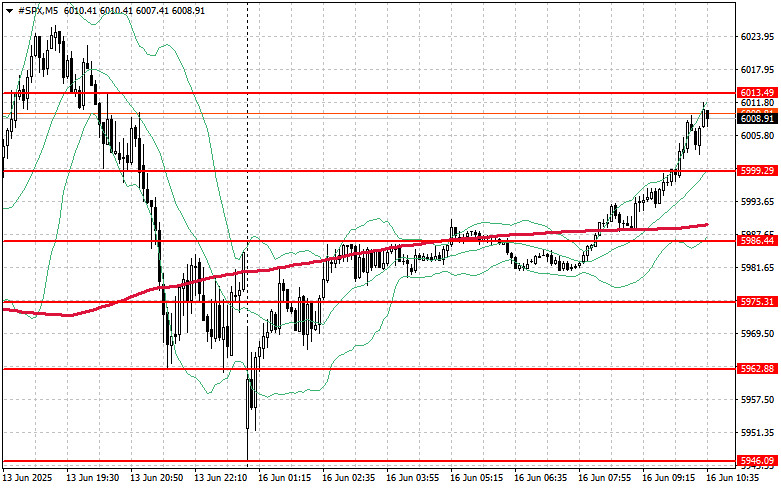یہ بھی دیکھیں


 16.06.2025 10:43 AM
16.06.2025 10:43 AMAt the end of the previous regular session, U.S. stock indices closed in negative territory. The S&P 500 dropped by 1.13%, while the Nasdaq 100 declined by 1.30%. The Dow Jones Industrial Average lost 1.79%.
Today, investors adopted a cautious stance as the escalation of the conflict between Israel and Iran led to a rise in oil prices and raised concerns about long-term consequences.
The surge in oil prices triggered by the conflict presents a dual threat. On one hand, it fuels inflation, potentially prompting central banks to tighten monetary policy. On the other hand, it pressures corporate earnings by increasing companies' costs and reducing their competitiveness. In this context, investors prefer to stay on the sidelines, monitoring developments and waiting for clearer signals.
The long-term consequences of the conflict remain uncertain. Depending on its scale and duration, it could lead to oil supply disruptions, increased geopolitical instability, and possibly broader military action. All of this poses serious risks to the global economy and financial markets.
Chinese indices traded within a mixed range of gains and losses. European index futures saw slight declines. The U.S. dollar was mostly unchanged, while gold hovered near a record high.
As noted earlier, Brent crude prices surged 5.5% at the start of trading but quickly gave up most of those gains. The sharp jump in oil prices underscored the wait-and-see attitude of many investors as they weighed fears over the escalating Middle East conflict against domestic developments. By the end of the trading session, oil was up less than 1%.
The key concern for investors is whether the conflict can be contained following a weekend filled with attacks from both sides and Israeli Prime Minister Benjamin Netanyahu's vow to "strike every place and every target of the ayatollah regime."
However, markets have not yet fully abandoned risk. Yields on U.S. Treasuries and some Asian government bonds rose — a sign that investors are not aggressively seeking the safety of low-risk government debt.
The Israeli shekel rose more than 1% against the dollar after four consecutive days of losses.
As for the technical picture of the S&P 500, the primary objective for buyers today will be to overcome the nearest resistance at $6013. This would support further growth and open the path toward a breakout to the $6030 level. An equally important task for bulls will be maintaining control above $6047, which would strengthen their position. If the index moves lower amid reduced risk appetite, buyers must defend the $5999 level. A breakdown below it would quickly push the index back to $5986 and open the door to $5975.
You have already liked this post today
*تعینات کیا مراد ہے مارکیٹ کے تجزیات یہاں ارسال کیے جاتے ہیں جس کا مقصد آپ کی بیداری بڑھانا ہے، لیکن تجارت کرنے کے لئے ہدایات دینا نہیں.


